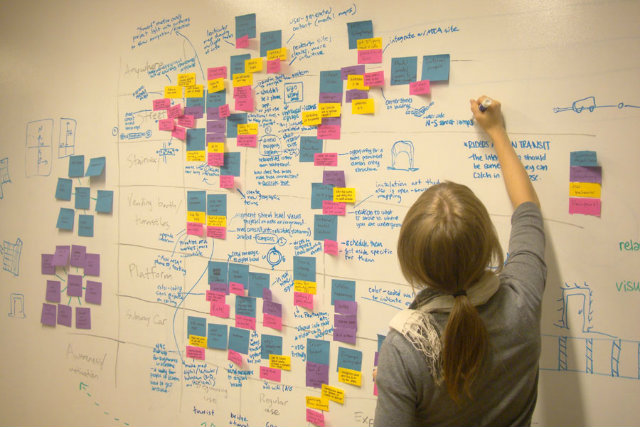
“My brand is customer-centric.” How many times have you heard these words? What exactly does it mean to be a customer-centric company? It is a revolution in how you think and act; it is the awareness of the increased significance of differentiating on customer experience.
Of course, you can’t simply switch your strategy and mentality overnight. This is a change that requires time and dedicated tools. Smart tools for smart customers. The digital customer journey map is the first and primary tool to deliver amazing meaningful experiences.
In digital markets, you always find yourself between two opposing forces:
- Digital smart customers are leveraging technological innovation (mobile devices) to rebuild the traditional relationships with brand and products.
- Competitors from all over the world are increasingly focusing on customers, starting from their needs and desires to create the ideal experience.
The customer is the nerve center of a journey that gets constantly reinvented by technology and innovation.
Digital leaders know the importance of understanding clients and being customer-centric: A recent Gartner study revealed 89% of CMOs plan to compete primarily on customer experience by 2016. Also, most entrepreneurs think they are already doing a very good job. The problem is, there is still a chasm between theory and practice.
There will be no results if you try to engage new customers using old tactics. Traditional customer journey mapping applied to empowered customers translates into a drop in the engagement. According to a survey by IBM and eConsultancy, 81% of companies say they have a holistic view of their customers, but only 37% of customers believe that brands really understand them.
The management of experiences is not just a declaration of intent; it is the willingness to get involved and get ready to evolve (your business structure and mentality) to meet and exceed the expectations. Excellence in customer experience is not an advertising copy; it is a mindset, an attitude.
Today, people can choose from a potentially infinite set of suppliers that have essentially the same offering and quality. Thus, the product is not a differentiator. Why should they choose you? Someone is surely selling at a lower price, so the price is not a differentiator either.
A fantastic product speaks for itself, and it is surely critical to increasing revenues and earn loyalty, but the experience is the only thing that sets you apart from competitors in this global dematerialized market. Now you see why companies focus so heavily on the customer experience.
Customer experience is the result of the interactions a client has with your brand and products across all channels, online and offline. Customer journey mapping is the tool that helps you portray your customers’ experiences, a holistic approach to understanding what they do and think during the interactions.
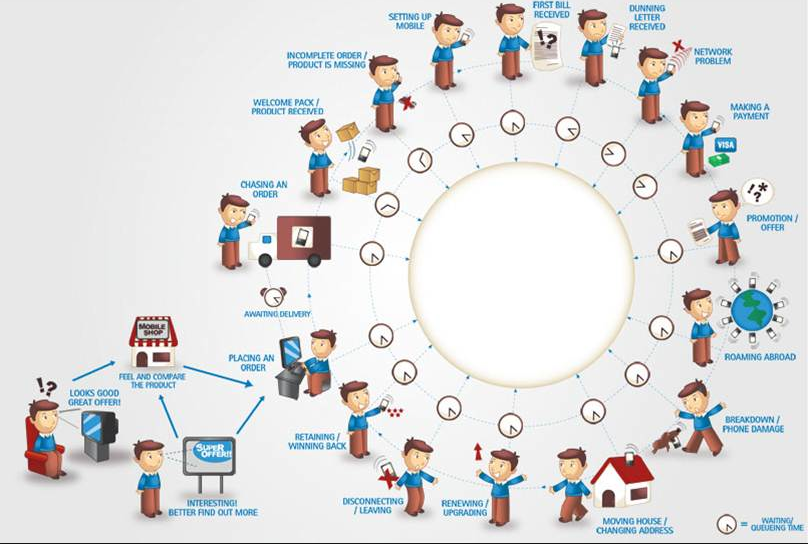
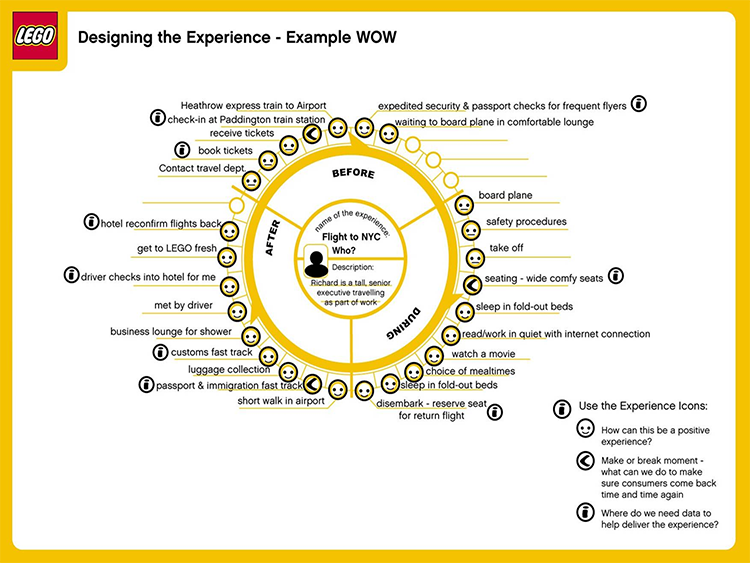
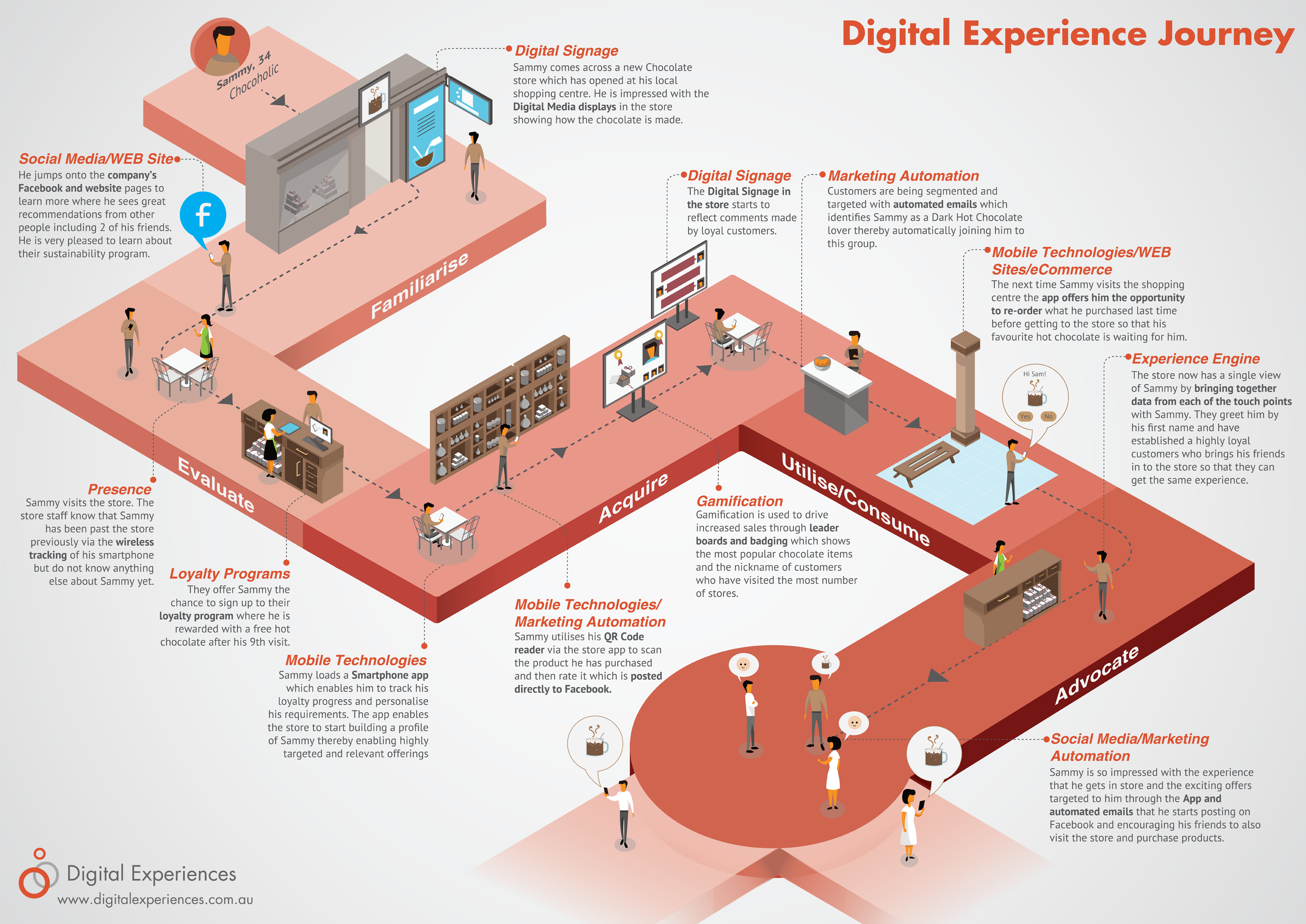
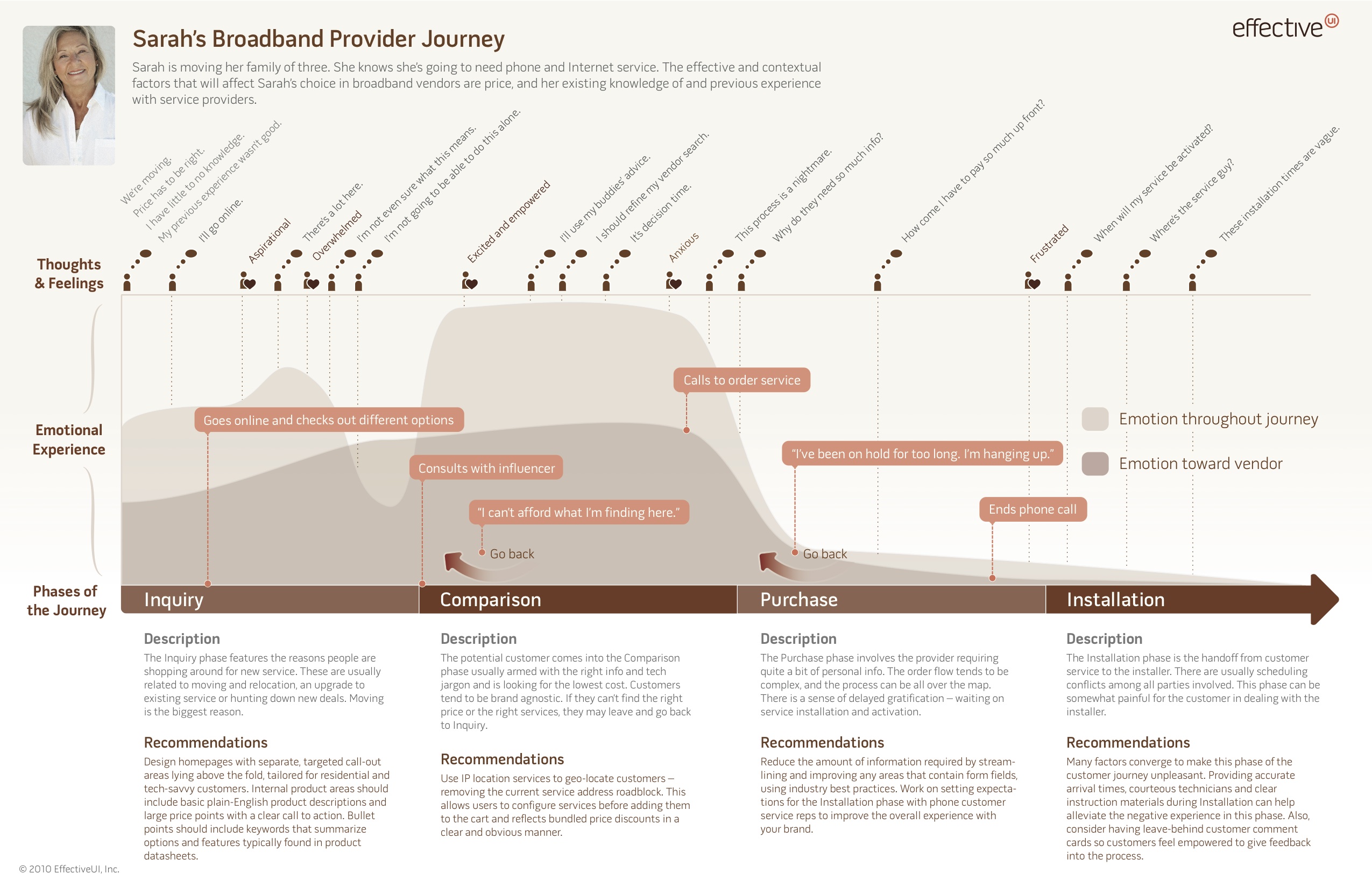
When you face the journey map, you have many questions that need an answer. It looks like solving a mystery: the less you know about your customers, the more you need to map their journey. Start with what you already have and work backwards to understand customer behaviors.
The ‘crime scene’ revolves around four key elements:
- Digital customers - always connected and empowered.
- Mobile devices - smartphone as the first screen.
- Connected technologies - wearables and the Internet of Things.
- Micro moments - real-time interactions with specific intents.
You can structure a customer journey map in many ways, but each approach involves the same prerequisites: Five basic and five advanced rules that set the foundations of the new digital customer journey.
BASIC TIPS
BE CLEAR ON THE GOALS OF MAPPING
You should create a journey map to gain insights about your customers’ typical experience, and to help them through the conversion process. Maps are excellent at showing the gap between expectations and perceptions, but they are useless if you do not have a clear objective for the journey. Goals include your objectives AND your customers’ ones.
KNOW WHOSE JOURNEY YOU ARE MAPPING
There is a reason if personalization has become the mantra for so many digital companies. No customer is like the others. To map a journey you first need to identify your buyer personas, fictional representations that should include both the customers you currently have and the ideal customers you expect to have.
TALK TO PEOPLE AND GAIN DATA
The definition of business goals and buyer personas has roots in data analysis but can only happen if you talk to people. Customer experience is about people, not technology. To truly understand what happens at each touch point of the journey, you need to gather feedback from as many stakeholders as possible, starting with employees and customers.
CREATE A CROSS-FUNCTIONAL TEAM
One great mistake that companies often do is to consider customer experience as a department, sometimes absorbed into customer service. The experience, on the contrary, is a full-time commitment that involves the entire organization. The best way to manage the journey map is to create a cross-functional team, able to analyze and take action.
AVOID DATA PARALYSIS
Connected technologies produce a continuous stream of information about customers and competitors. Today, you can understand what customers think, what they do online and in store, what they like and prefer. The downside is the overflow of raw data that may slow down the entire process. To avoid the paralysis, you must be able to move forward from big data to smart data.
Once you are sure you control these elements, you can take one step further.
ADVANCED TIPS
TRACE THE NEW TOUCH POINTS
Every single (social, economic and technological) trend leads to the inevitable change in the digital customer journey. It may be a new touch point or a total reinvention of the map. Just think about what the smartphone has done to our life: the way we communicate, share and buy is now completely different. No journey map is now and forever. You should never ignore the different sources of interaction that extend the relationship with your customers and reveal new means of engagement.
DEFINE THE SINGLE TOUCH POINTS
As said, a single customer has peculiar qualities. Pretty much the same happens with touch points. They are different in number, intensity, consequences and relevance. Each one has a distinct entry point, inner path, and exit point. The definition of the single touch points is essential. Start with the following question: Where did the customer come from? How did he find your brand? How many interactions happened before he moved on?
SEE WHAT HAPPENS BEHIND THE SCENE
When defining a touch point, it is important that you can look at it both as a business and as a customer. Assuming your customer’s perspective, you will be able to evaluate the experience for what it is. Considering the touch point as a business, you will see what happens behind the scene, below the line of visibility. Here you will find those technological and organizational aspects that impact the experience as a whole.
FIND THE MOMENTS OF TRUTH
Every touch point is critical, but some touch points are more critical than others. We can call them (micro)moments of truth, where customers make the final decision to purchase. They are an invaluable source of useful insights about engagement: not only where they ultimately buy it (in store, online, e-commerce site), but also where they find the information that triggers the decision. Use the map to highlight these moments and find your strengths and weaknesses.
MOVE BEYOND MAPPING
Digital customer journey mapping is a tool. An incredible tool but still a tool. By that, we mean that you will see the map in many shapes and forms if you look online. Choose the one that suits you the most but do not waste your time to build a catchy one. Do not focus on the form; concentrate on the relationship with your customers, instead. Exploit the map to improve your customer experience strategy, do not make it the purpose of your analysis. Use the map to move beyond mapping.
YOU MIGHT ALSO LIKE: Map Your Digital Customer Journey, Mobile First
To help you provide a strategic advantage to your organization, Neosperience has crafted the first DCX 7-Steps Checklist, with requirements and insights for a successful digital transformation. Download the free guide here:



 Your magnifing glass to deeply understand your users and increase the value of each relatonship.
Your magnifing glass to deeply understand your users and increase the value of each relatonship. Listen to the voice of your customers deeply to understand what they truly want.
Listen to the voice of your customers deeply to understand what they truly want. The Lead Generation Platform to get leads from anonymous traffic on your website.
The Lead Generation Platform to get leads from anonymous traffic on your website.  Understand the behavior of people in physical spaces and monitor safety requirements.
Understand the behavior of people in physical spaces and monitor safety requirements. The Digital Commerce Platform designed to follow the most modern technological standards..
The Digital Commerce Platform designed to follow the most modern technological standards.. The XReality platform to tell brand and product stories by connecting physical and digital worlds.
The XReality platform to tell brand and product stories by connecting physical and digital worlds. Points, rewards, levels, badges, missions: a world of nudges to nurture your customer community.
Points, rewards, levels, badges, missions: a world of nudges to nurture your customer community. Discover all the other solutions!
Discover all the other solutions!









